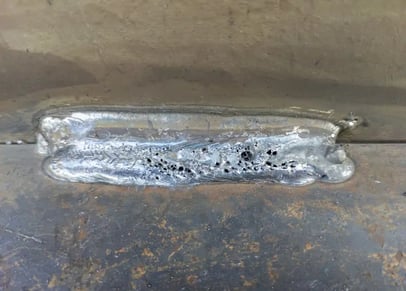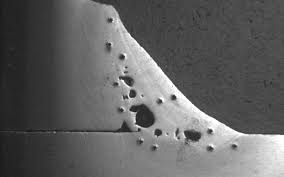Recognizing Porosity in Welding: Exploring Causes, Effects, and Avoidance Techniques
Porosity in welding is a relentless challenge that can significantly impact the high quality and stability of welds. As experts in the welding market are aware, recognizing the causes, effects, and avoidance strategies associated to porosity is critical for accomplishing durable and dependable welds. By delving into the origin creates of porosity, analyzing its damaging effects on weld top quality, and discovering effective prevention methods, welders can boost their understanding and abilities to create premium welds continually. The complex interplay of elements adding to porosity requires a comprehensive understanding and an aggressive technique to make sure successful welding end results.
Usual Root Causes Of Porosity
Porosity in welding is mainly caused by a combination of factors such as contamination, improper securing, and insufficient gas coverage throughout the welding procedure. Contamination, in the kind of dirt, oil, or corrosion on the welding surface, produces gas pockets when warmed, bring about porosity in the weld. Improper shielding takes place when the securing gas, typically made use of in procedures like MIG and TIG welding, is not able to fully shield the liquified weld swimming pool from responding with the surrounding air, resulting in gas entrapment and subsequent porosity. Furthermore, poor gas protection, commonly due to wrong circulation prices or nozzle positioning, can leave components of the weld unprotected, permitting porosity to develop. These aspects collectively add to the formation of gaps within the weld, weakening its honesty and possibly causing structural issues. Comprehending and attending to these typical reasons are important action in avoiding porosity and ensuring the quality and strength of welded joints.
Effects on Weld Top Quality
The visibility of porosity in a weld can substantially endanger the total high quality and honesty of the welded joint. Porosity within a weld creates gaps or cavities that damage the framework, making it more prone to breaking, deterioration, and mechanical failure.
Furthermore, porosity can hinder the efficiency of non-destructive testing (NDT) techniques, making it testing to spot other problems or interruptions within the weld. This can lead to considerable safety worries, especially in critical applications where the architectural honesty of the welded components is critical.

Avoidance Techniques Overview
Provided the damaging influence of porosity on weld top quality, efficient avoidance techniques are vital to keeping the architectural integrity of bonded joints. Furthermore, choosing the appropriate welding parameters, such as voltage, present, and travel speed, can help lessen the threat of porosity formation. By integrating these prevention strategies into welding practices, the occurrence of porosity can be significantly lowered, leading to stronger and much more dependable welded joints.
Value of Proper Shielding
Correct protecting in welding plays an essential role in preventing atmospheric contamination and making certain the integrity of welded joints. Shielding gases, such as argon, helium, or a useful content mixture of both, are commonly made use of to protect the weld swimming pool from reacting with elements in the air like oxygen and nitrogen. When these reactive elements come into contact with the warm weld swimming pool, they can create porosity, resulting in weak welds with decreased mechanical properties.

Poor protecting can cause numerous flaws like porosity, spatter, and oxidation, compromising the structural honesty of the bonded joint. Sticking to appropriate shielding methods is necessary to produce premium welds with marginal defects and make sure the long life and integrity of the welded elements.
Surveillance and Control Techniques
Just how can welders properly keep track of and regulate the welding procedure to guarantee optimum outcomes and avoid problems like porosity? One secret technique is via using innovative surveillance innovations. These click here for more info can include real-time surveillance systems that supply comments on parameters such as voltage, current, travel speed, and gas circulation prices. By constantly monitoring these variables, welders can determine discrepancies from the perfect conditions and make immediate changes to stop porosity formation.

Furthermore, carrying out appropriate training programs for welders is vital for keeping track of and regulating the welding process effectively. What is Porosity. Educating welders on the importance of keeping consistent criteria, such as proper gas securing and travel speed, can aid protect against porosity problems. Regular analyses and accreditations can likewise guarantee that welders excel in tracking and managing welding procedures
Furthermore, the usage of automated welding systems can enhance tracking and control capacities. These systems can precisely manage welding parameters, reducing the possibility of human mistake and making certain constant weld quality. By combining sophisticated tracking modern technologies, training programs, and automated systems, welders can efficiently check and regulate the welding procedure to minimize porosity issues and accomplish top quality welds.
Verdict
